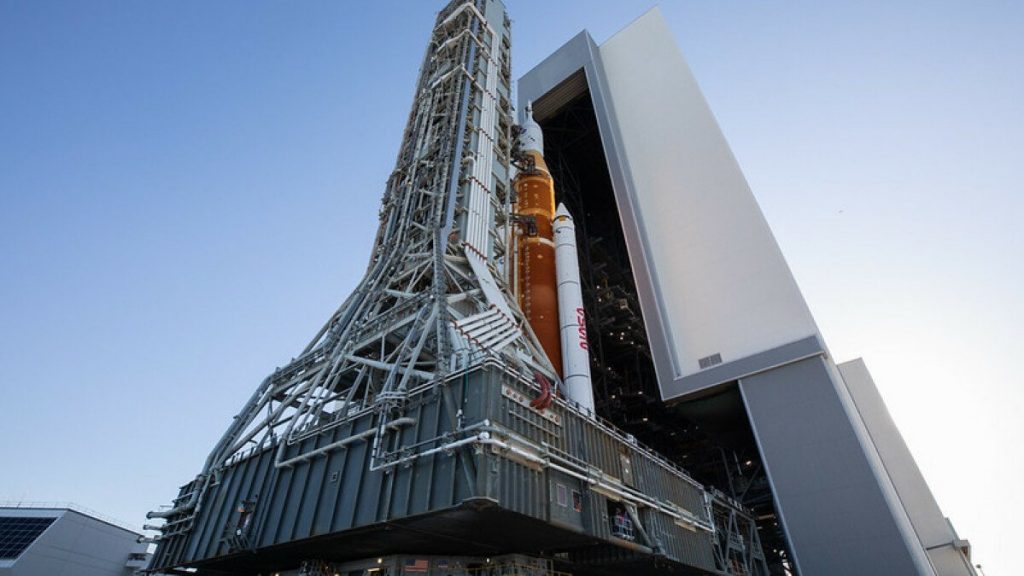
NASA’s first 4 miles to the moon starts now. Here’s how to watch. (Image Credit: Mashable)
NASA has never stopped sending probes into the cosmos, but it is about to renew its legacy as human deep space explorers.
The U.S. space agency will take its mega moon rocket out of storage on Tuesday before its inaugural Artemis I mission, an uncrewed expedition around the moon, which is scheduled to leave Earth as early as Aug. 29.
The first leg of that trip, which NASA hasn’t undertaken since the last Apollo mission in 1972, starts Tuesday with the slow crawl of the rocket and spacecraft to the launchpad in Cape Canaveral, Florida.
Mission leaders refer to this final rollout as “the first four miles of NASA’s return to the moon,” said Michael Bolger, exploration ground systems manager at Kennedy Space Center, in a news briefing earlier this year.
As of 4:30 p.m. ET, the ground crews had opened the enormous Wizard of Oz-like bay doors on the Vehicle Assembly Building to let the beast out. After some nearby storms caused delays, the rocket and spacecraft finally cleared the threshold just before 11 p.m. It’ll take hours to inch to its destination.
Watch a live broadcast of the skyscraper on wheels below or on NASA’s Kennedy Space Center YouTube channel:
Here’s what the imposing behemoth looked like moving down the “crawlerway” in March for a launch rehearsal.

Credit: NASA / Kim Shiflett
It’s been a long time since NASA had a rocket of this magnitude, capable of sending heavy loads of cargo and astronauts into deep space. Not only is the 32-story, 5.75 million-pound rocket — officially known as the Space Launch System or SLS — built to travel to the moon, it’s expected to one day send the first crewed flight to Mars. Robotic scientific journeys to Saturn and Jupiter also could be in its future.
Artemis I, the first in a series of planned voyages named after the Greek goddess and twin of Apollo, is a more than $4 billion launch to fly the Orion capsule farther than any spacecraft built for humans has ever flown.
Though this test mission won’t include astronauts, the 42-day spaceflight will allow the United States to send a crew on the next, more complex mission, Artemis II. The first moonwalk of a woman and person of color is expected to happen during Artemis III, planned for around 2026.
Want more science and tech news delivered straight to your inbox? Sign up for Mashable’s Top Stories newsletter today.
For Artemis I, an uncrewed Orion will fly a total of some 1.3 million miles, including 40,000 miles beyond the moon as it tests different orbits. Forty-two days after liftoff, the capsule will splash down in the Pacific Ocean. A primary purpose of this first mission is to test Orion’s ability to safely reenter Earth’s atmosphere and drop into the correct spot for the Navy to recover, said Bill Nelson, NASA’s administrator.
“After its long flight test, Orion will come home faster and hotter than any spacecraft has before. It’s coming back at 32 Mach [speed]. It’s going to hit the Earth’s atmosphere at 32 times the speed of sound. It’s going to dip into the atmosphere and bleed off some of that speed before it starts descending through the atmosphere,” said the former astronaut during a briefing on Aug. 3. “On the Space Shuttle, we were at 25 Mach, which is about 17,500 miles an hour.”
But the mega moon rocket has to warm up to that. It’ll never travel over 1 mph on its crawl to the launchpad.





